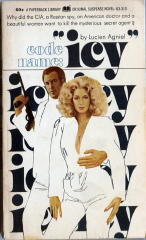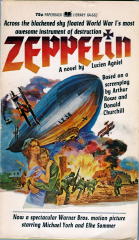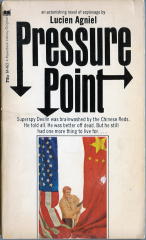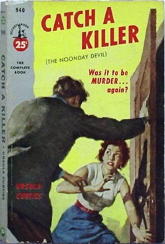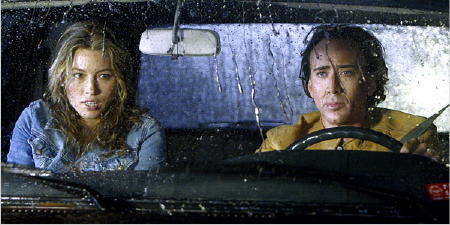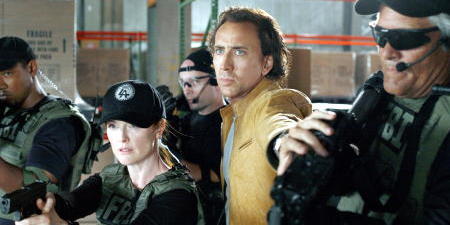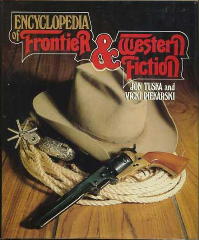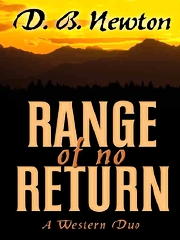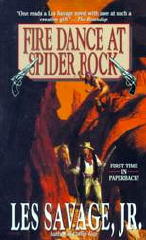Mon 18 Feb 2008
KILL ME AGAIN. 1989. Val Kilmer, Joanne Whalley-Kilmer, Michael Madsen. Screenwriters: John Dahl & David W. Warfield. Director: John Dahl.
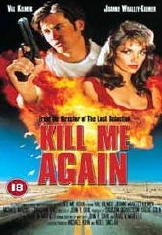
Whee-oooh! For fans of modern noir drama, this movie will take you for quite a ride. Flawed though it may be, there are scenes in this movie that seem to come straight from those beloved yellowed old Gold Medal paperbacks from the 1950s, updated only a little – and thinking back, perhaps not even at all.
Jack Andrews, played by Val Kilmer, is one of those down-at-the-heels Reno private eyes who exist only in fiction, who’s hired by a beautiful client to take on a slightly illegal job for her. The client, Fay Forrester (Joanne Whalley-Kilmer), claims that she is on the run from a former boy friend who’s stalking her and that police cannot do anything about it with no solid evidence that he means her harm.
Her solution? To have Jack create a murder scene, with herself as the victim, so that she can take on a new identity and start a new life. She does not mention that she has a small suitcase in her possession filled with hundred dollar bills, and the “boy friend” is her former partner in crime, Vince Miller, played to perfect psychopathic perfection by Michael Madsen.
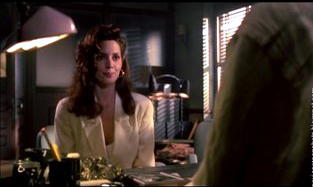
As it so happens, Jack has some seriously due gambling debts – so seriously that he has a broken little finger to show for it – and after thinking over for all of a minute and a half – not to mention that Faye is seriously beautiful – he agrees to take the job.
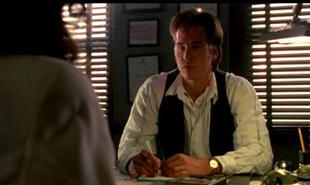
I forgot to mention the mob from whom Vince and Fay have stolen the money, nor have I said anything about the rock that Fay bashed over Vince’s head when she made her departure from him. Neither one will take their losses sitting down – neither the mob, nor Vince.
The murder scene that Jack creates is only moderately successful, and when he catches up with Fay again – yes, figure that out – they both find that their trail has not been terribly difficult to follow. Hence the title, and I wouldn’t have told you quite so much about the story if I hadn’t have thought that the title needed an explanation.
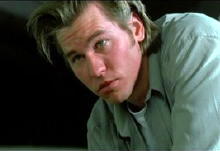
Beautifully photographed in color rather than black and white, the movie still manages to demonstrate its noir roots in shadows and shading and even broad daylight. Nicely done, and there are some nice twists to the tale that I have not been even close to telling you about.
Flaws? There may be a twist or two too many for some, but they worked for me, all but perhaps the very last one. (I’m still thinking that one over.) Michael Madsen plays lunatic madmen as well as anybody, and Joanne Whalley-Kilmer is not only savagely beautiful, with curves galore, but she is (or her character is) also seriously loopy in the head. You can almost hear the wheels moving in her mind, with a lusty gleam in her eyes, whenever she’s contemplating her next course of action.
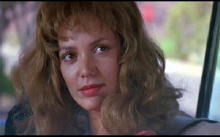
Val Kilmer, on the other hand, seems to be the only one not seriously up to his part. His face is too innocent, too much of choir boy’s, to be first of all, a down-at-the-heels Reno private eye who exist only in fiction. That he’d get caught up in the grip of lust for Fay Forrester goes without saying – or is only interested in the money – or is he trying for both? His facial expressions do not give it away, which in some sense is good, but after a while you begin to wonder as you start to realize that he only has two or three facial expressions to give.
An almost forgettable flaw, perhaps, but perhaps not, and I thought I’d better warn you. All in all, I thought the movie was terrific, or mostly so, but there are others who don’t. My recommendation: Don’t listen to them.
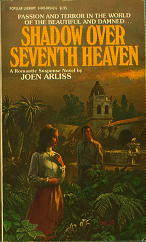
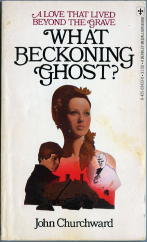
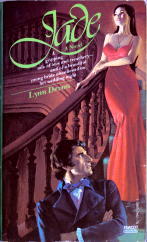
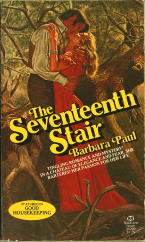
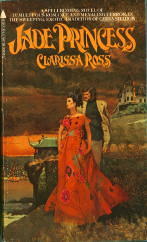
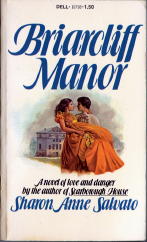
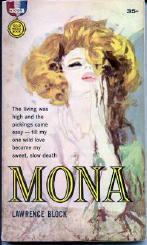
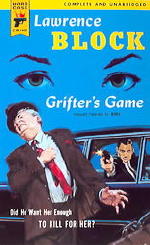 To get back to my first statement, the second half, it is no longer true that you will have trouble finding a copy of this book, as it has been reprinted so many times now that it has to be considered a classic in noir literature, the so-so letter grade that I assigned to it notwithstanding.
To get back to my first statement, the second half, it is no longer true that you will have trouble finding a copy of this book, as it has been reprinted so many times now that it has to be considered a classic in noir literature, the so-so letter grade that I assigned to it notwithstanding.